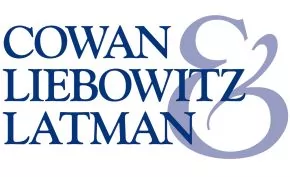Although trademarks, copyrights, patents, and trade secrets all concern intangible property rights and overlap to some extent, they differ from each other significantly. If you know the attributes of each, you can take full advantage of them to weave a fabric of intellectual property protection. And the failure to get appropriate protection is an invitation to pirate. Competent legal advice often is advisable because all four areas of law are changing, especially as applied to new technology. It may help to distinguish them by remembering that:
- Trademarks protect source identifications (marks of trade);
- Copyrights protect original creative expressions;
- Patents protect new and useful inventions; and
- Trade Secrets protect valuable secret information.
This pamphlet summarizes the principal attributes of these various types of protection.
What is a Trademark?
A trademark is a brand name, logo or package design, or a combination of them, used by a manufacturer or merchant to identify its goods or services and to distinguish them from others. Trademarks include brand names identifying goods (Dole for canned pineapple) and trade dress consisting of the graphics, color or shape of packaging or, after sufficient use, of goods (Coca-Cola Bottle for a soft drink); service marks identifying services (McDonald's for a restaurant service); certification marks identifying goods or services meeting specified qualifications (Woolmark for apparel made of 100% wool); and collective marks identifying goods, services or members of a collective organization (The International Game Fish Association for a game fishing organization). The same legal principles generally apply to all of these terms, often simply called "marks."
How to obtain trademark rights.
You need not register a trademark to have protectible exclusive
rights in it and reserving a corporate name in one or more states
is irrelevant to trademark rights. Simply by using a mark on or in
connection with goods, or by displaying the mark in the sale or
advertising of services, you can automatically acquire trademark
rights in the geographic areas of use and natural expansion.
You can stake out nationwide trademark rights by applying to register the mark in the U.S. Patent and Trademark Office (USPTO). (One reason why people confuse trademarks with patents seems to be that both are handled by the same office, but the trademark and patent operations are completely separate.) A non-U.S. trademark applicant, except for Canadians, must be represented by a U.S. attorney.
Federal trademark registration.
Registration of a mark is not mandatory, and rights will be
protected without registration if you have actually used the mark.
But it may be advisable to establish your rights by applying to
register the mark in the USPTO even before use. You can base an
application on one or more of the following:
- actual use of the mark in commerce;
- a bona fide intention to use the mark in federally regulated commerce (but the mark subsequently must be used in the ordinary course of trade, and not merely to reserve a right in the mark, before the registration will be issued);
- a non-U.S. owner's country of origin application filed during the previous 6 months, or its country of origin registration, in either case with a statement of a bona fide intention to use the mark in U.S. commerce (although use before registration is not required);
- an extension to the U.S. of an international registration issued by the World Intellectual Property Organization in Geneva, based on a country of origin application or registration, with a declaration of a bona fide intention to use the mark in U.S. commerce (which extension is examined as a U.S. application, although use before registration is not required).
Registration will be refused if the mark, among other things:
- is not capable of distinguishing the applicant's goods or services from those of others;
- may falsely suggest a connection with a person or institution;
- consists of a flag or coat of arms of the United States or other governmental entity;
- consists of the name, portrait or signature of a living individual without that person's consent;
- so resembles another registered trademark, or a mark or trade name previously used by another and not abandoned, as to be likely to cause confusion, mistake or deception when applied to the applicant's goods or services;
- is merely descriptive or deceptively misdescriptive of applicant's goods or services and has not become recognized as an indication of source;
- is deceptive or geographically deceptively misdescriptive of applicant's goods or services; or
- comprises matter that, as a whole, is functional.
You also must file a specimen showing the mark as actually used in commerce, such as on labels or packaging or point of sale materials (including a website that accepts orders) for goods, or online or print advertisements for services, either at the time you file the application, or at least before registration, if the application is not based solely on a foreign application or registration.
Validity challenges.
Trademark applications and registrations may be challenged in
various ways, which include the following:
- During the opposition period or after registration. Anyone with a commercial interest may file an "Opposition" to the application, or file a petition for "Cancellation" of the registration, in the TTAB or a court, claiming one of the grounds stated above, or that the mark is likely to cause confusion with a previously used mark, or is likely to dilute the distinctiveness of a famous mark. The losing party may appeal to a higher tribunal.
To view the full article, please click here.
The content of this article is intended to provide a general guide to the subject matter. Specialist advice should be sought about your specific circumstances.

